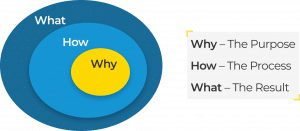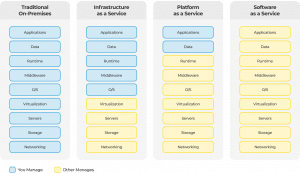Want to know more?
Are you interested in this project? Or do you have one just like it? Get in touch. We’d love to tell you more about it.
We worked with Strandbags, an established retailer with 300+ stores across Australia and New Zealand. Operating for close to a century, Strandbags knows a thing or two about weathering trends – both in accessory styles, and technology. The company engaged Equal Experts while undergoing a digital transformation, in 2020. We narrowed in on one major area of focus: the Digital Asset Management (DAM) solution. And one specific question: to build or to buy?
We worked closely with Strandbag’s technology leaders to select a new Digital Asset Management (DAM) software that would integrate across the entire business and radically overhaul its eCommerce operations.
We considered Strandbag’s unique challenges, as well as their goals, to pinpoint the exact requirements of the new DAM. To Strandbag’s surprise (and relief) this engagement was both brief and straightforward since the solution became very clear after some targeted discovery work using the following approaches.

Strandbags is one of Australia’s primary retailers for handbags, luggage, wallets, business bags, and more. With around 1800 staff, a proud history of nearly 100 years, and a significant footprint spanning 300+ stores across Australia and New Zealand plus a high volume e-commerce store, Strandbags stocks and represents some of Australia’s—and the world’s—favourite travel and bag brands.
Strandbags was in the midst of a move to Shopify (enterprise version), which was central to their digital transformation. While the project represented a major undertaking for the organisation, the team had been thus far happy with the progress.
There was a growing issue, however, in managing their digital assets. Particularly, the large library of product images for every stock-keeping unit. This library needed to be properly managed and maintained for reusability—a potentially time-consuming and cumbersome process. We wanted to leave Strandbags with clarity on both the ideal solution and a full implementation path for the right DAM.
The DAM is a crucial system for any retailer, but particularly so for one of Strandbag’s scale, with a large inventory and dynamic footprint of both brick-and-mortar and online sales.
The consequences of an inadequate DAM can be far-reaching and incredibly costly. We needed to make sure that whichever solution and advice related to the DAM we provided would grow with the business and adapt to its changing needs.
The first part of any of our discovery work involves defining and understanding the current landscape as is.
We do this by gathering a full picture of the business landscape and customers, and by mapping the current architecture and any technological solutions in place. This is usually achieved within the first week of a two-week discovery process.
It’s crucial at this stage to first focus on the ‘why’ – (why, how, what model). Too often we see business leaders focus solely on the ‘what’. In this case, for example, the mistake would have been a narrow focus on the DAM itself, rather than keeping close attention to the goals the DAM needed to achieve and the broader business objectives surrounding this engagement.
By focusing on the ‘why’ first, followed by the ‘how’ and ‘what’, you are less likely to make costly and misguided decisions during a digital project or transformation.

One approach we regularly return to at Equal Experts is referred to as “Marty v Martin”. Marty here refers to the work of Marty Cagan. Marty believes a successful product must be “valuable, usable and feasible”.
Learn more about the Marty v Martin approach.
The ‘Martin’ component refers to another leader in product thinking, Martin Eriksson. Specifically, Martin’s well-known Venn diagram highlighting his view of “product management as the intersection between business, technology and user experience”.
When we overlay Marty Cagan’s “valuable, usable, feasible” imperative with Martin Eriksson’s “business, technology, user experience” method, we can achieve a comprehensive and incisive analysis.

From here, we started to scope and evaluate the prospective platforms based on the valuable, usable and feasible criteria. Initially, this involved narrowing our options by deciding on whether to purchase a solution as Infrastructure as a Service (IAAS), Platform as a Service (PAAS) or Software as a Service (SAAS).
For Strandbags, the selection of SAAS was clear as there was no desire to own the application or the data housed within it. This left us with a handful of suitable candidates to consider. From here we evaluated each option based on their suitability and available integrations.
We helped Strandbags select the right off-the-shelf DAM that would meet all necessary criteria while being able to integrate with Shopify and the other existing technical platforms, being Shogun CMS and Adobe Suite. This narrowed the list to two remaining DAM candidates.
One of these DAM providers’ Implementation and Sales Teams had already started to build a great relationship with our client. To make the final call, we suggested Strandbags allow that positive relationship to guide their choice, since this would factor highly on the “valuable” criteria.
Ultimately it was a clear and simple decision, but vitally, one underpinned by some sophisticated and collaborative analysis.

Our team is always cognisant of getting the best value outcomes for every client we partner with. This extends to saving our clients time and money wherever possible. Sometimes it also involves slowing down the process and recommending teams look beyond Equal Experts for specific or niche support. This was the case during this engagement.
Following a successful discovery engagement, Strandbags requested we continue our partnership in implementing the DAM.
While we could do this, we also recognised the value in using the included implementation support provided by the DAM team first. This was more economical from Strandbag’s perspective, and thus a sensible next step. Honesty—along with transparency and integrity—is always the best policy.
We also helped guide Strandbags on a range of other digital projects so they could better prioritise and plan them in a well-paced way. For us, it’s about long-term relationships, not short-term revenue; delivering a great deal of value for the client to result in a high-trust, ongoing partnership.
We were pleased to help Strandbags continue on the trajectory of our discovery – autonomously and with the right support in place. The DAM was successfully implemented and has helped fuel the retailer’s eCommerce growth through a volatile 2020/2021.
Are you interested in this project? Or do you have one just like it? Get in touch. We’d love to tell you more about it.